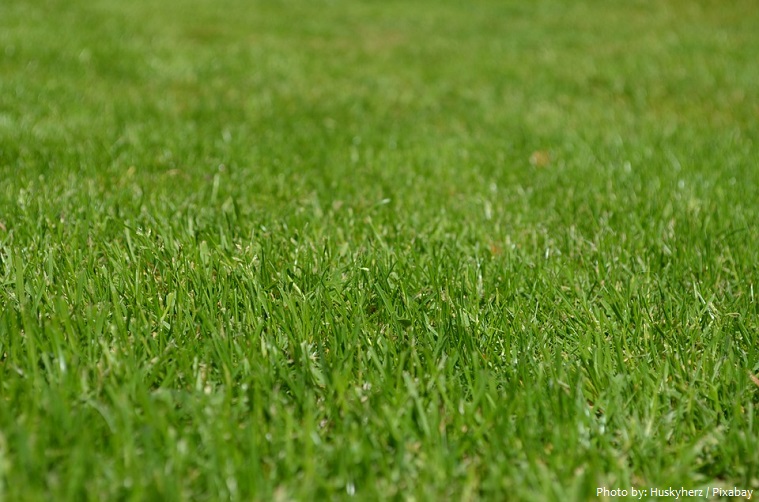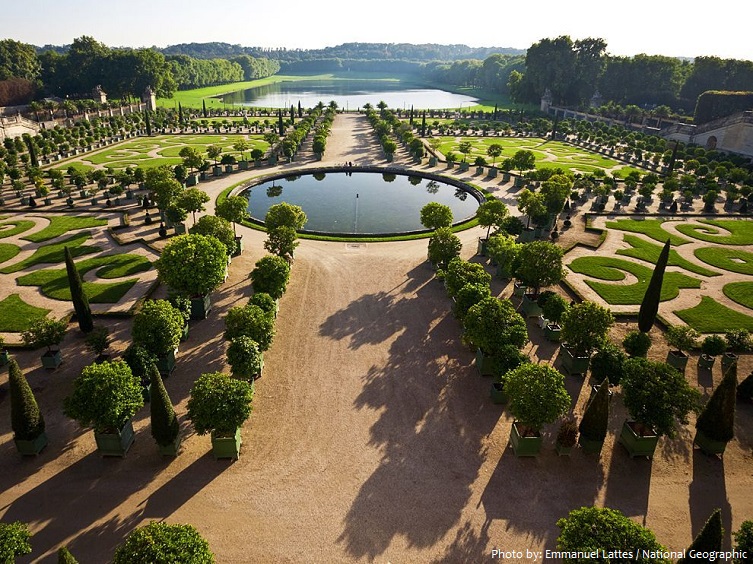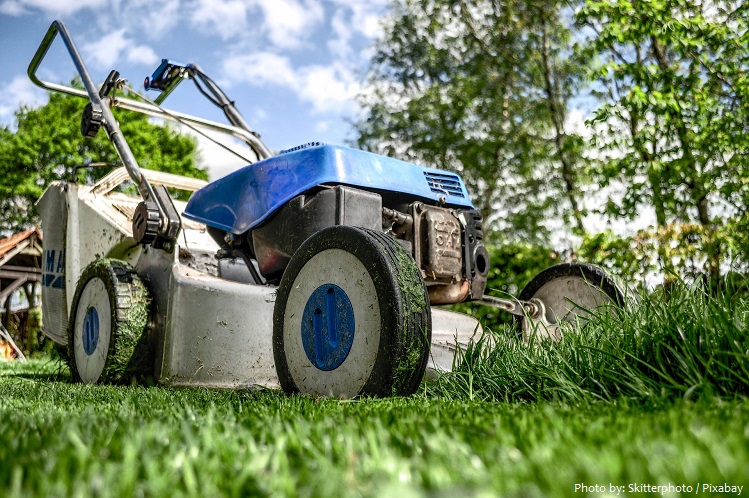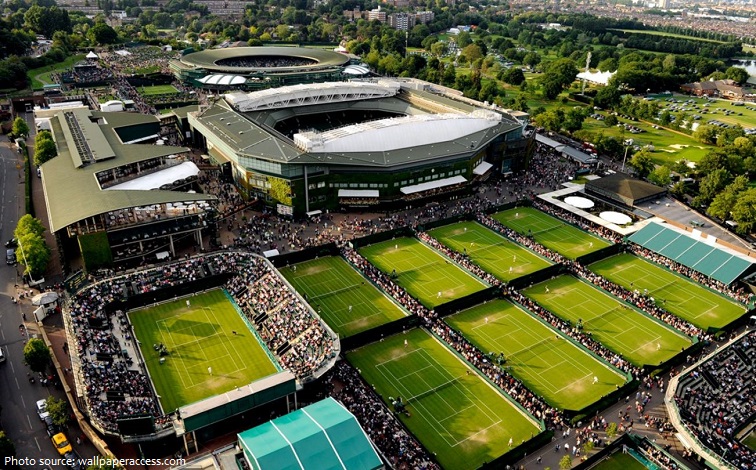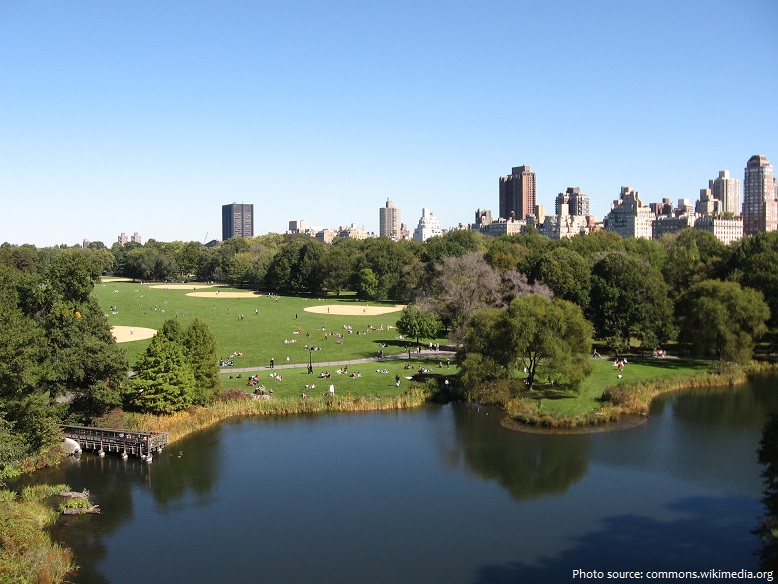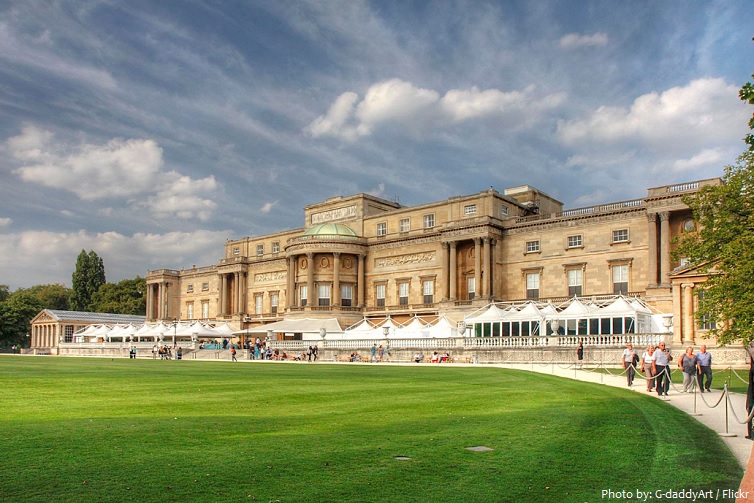A lawn is an area of land planted with grass, and sometimes clover and other plants.
Lawns are a common feature of private gardens, public landscapes and parks in many parts of the world.
They are created for aesthetic pleasure, as well as for sports or other outdoor recreational use.
In recreational contexts, the specialised names turf, pitch, field or green may be used, depending on the sport and the continent.
Lawns are an important covering of playing surfaces in many sports, including football (soccer), American football, tennis, golf, cricket, softball and baseball.
The term “lawn”, referring to a managed grass space, dates to no earlier than the 16th century.
Lawn is a cognate of llan which is derived from the Common Brittonic word landa that originally means heath, barren land, or clearing.
Lawns may have originated as grassed enclosures within early medieval settlements used for communal grazing of livestock, as distinct from fields reserved for agriculture.
In medieval Europe, open expanses of low grasses became valued among the aristocracy because they allowed those inside an enclosed fence or castle to view those approaching.
Lawns became popular with the aristocracy in northern Europe from the Middle Ages onward. The early lawns were not always distinguishable from pasture fields.
By the late 17th century, grass lawns, with the grass cut close to the ground, started popping up on the grounds of the wealthy, such as at the famed Versailles gardens in France where “green carpet” (tapis vert) was included in André Le Nôtre’s landscape design.
Before the invention of mowing machines in 1830, lawns were managed very differently. One acre (0.4 hectare) of lawn would take three gardeners all day to mow using a tool called a scythe.
A push mower was invented by the 1870s, and a steam-powered mower 20 years later. Along with the advent of other inventions like the garden hose, the zest for lawn care came to every corner of burgeoning suburbia by the late 1900s.
With the increasing popularity of sports in the mid-Victorian period, the lawn mower was used to craft modern-style sporting ovals, playing fields, pitches and grass courts for the nascent sports of football, lawn bowls, lawn tennis and others.
A man named Frederick Law Olmstead, the “father of American landscape design” — who you might know as the man who designed Central Park in New York — was also designing suburbs where each house had its own little lawn. This further popularized the idea that houses should have grass lawns.
The creation in the early 20th century of country clubs and golf courses completed the rise of lawn culture.
Today, approximately 80% of all homes in the United States have grass lawns.
Probably the most famous lawns in the world are the lawns of Wimbledon, London where the Wimbledon Championships are played is the only major tennis tournament played on a grass court. It is the oldest tennis tournament in the world, and is regarded by many as the most prestigious. It has been held at the All England Club in Wimbledon, London, since 1877 and is played on outdoor grass courts, and since 2009 with a retractable roof over Centre Court.
The South Lawn of the White House is a world famous lawn in Washington, D.C.. Open to the public until the Second World War, it is now a closed part of the White House grounds that provides a setting for official events like the State Arrival Ceremony as well as informal gatherings including the annual White House Egg Rolling Contest and staff barbecues. Marine One, the presidential helicopter, departs from and lands on the South Lawn.
In the center of Central Park lies the Great Lawn, a green pasture of 22 hectares (55 acres) that is considered one of the most famous lawns in the world. The Great Lawn is a wonderful place to have a picnic on a spring afternoon or to catch some rays in the summer sun.
The Eiffel Tower is one of the most highly recognized landmarks in the world. Its stunning lawn, part of the Champ de Mars, is just one of its many beautiful features. This grassy field provides a leisurely hangout spot for both tourists and Parisian locals.
The main lawn at Buckingham Palace is the centrepiece for the Queen’s official residence and forms the focal point of the monarch’s annual garden parties.
The “stripes” that you see on a lawn or athletic field are caused by light reflecting off the blades of grass. It has not been cut at a different height nor is it a different breed of grass. The “stripes” are made by bending the blades of grass in different directions. So cutting a lawn in an opposing pattern (up/down, right/left, north/south, east/west etc) provides the most contrasting stripe effect.

